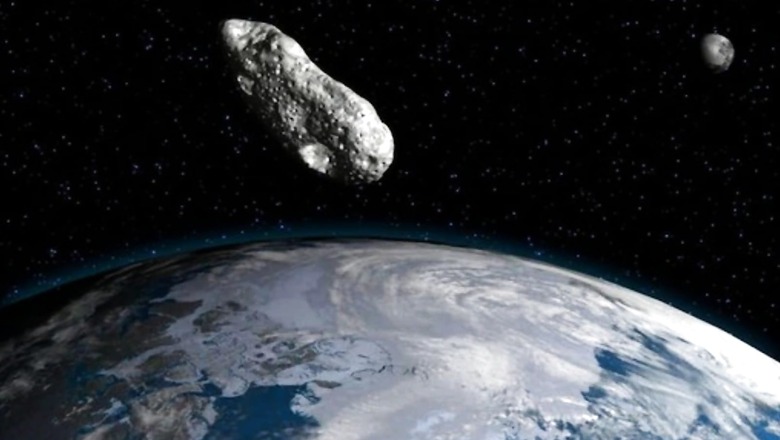
views
A massive asteroid that is bigger than the world’s tallest skyscraper Burj Khalifa will soar past Earth on Saturday, August 21. The “potentially hazardous” asteroid is a cluster of 1,000 rocks and has been named as “2016 AJ193” by the National Aeronautics and Space Administration (NASA). The fast-moving block is travelling through space at 94,208 km per hour, the US space agency, which is keeping a close eye on it, recorded. At this speed, the asteroid is likely to pass within 3,427,903 km of Earth.
Asteroid ‘2016 AJ193’ Classified As Near-Earth Object:
NASA has classified it as a Near-Earth Asteroid and is currently on course to miss Earth by 212,971,5 miles at 3:10 pm GMT (8:40 pm IST) today. This visit of 2016 AJ193 will be the asteroid’s closest approach to planet Earth for at least the next 65 years, Sputnik news reported.
Size of the Asteroid:
The 2016 AJ193 is around 1.4 km wide and 4,500 feet in diameter. The asteroid is so massive that its size is 1.5 times of the Burj Khalifa, and over 4.5 times the size of the Eiffel Tower.
The space agency predicted its orbital track and has said that the asteroid will not do any harm on Earth this time.
Will the Asteroid Be Visible to Naked Eye?
The asteroid will not be visible to the naked eye. Astronomers will be able to spot it by using telescopes for their study and research.
In January 2016, it was spotted by the Panoramic Survey Telescope and Rapid Response System (Pan-STARRS) facility, which is part of Hawaii’s Haleakala Observatory in the US. According to scientists, 2016 AJ193 orbits the Sun. While traveling towards Earth’s orbit, it goes in Jupiter’s direction.
NASA started observing the asteroid on August 20 and will continue till August 24 by using radar. NASA is currently tracking over 26,000 near-Earth asteroids including over 1,000 potentially hazardous.
What Are Asteroids?
Asteroids are rocky fragments left over from the origin of the solar system 4.6 billion years ago. The majority of asteroids orbit the sun between Mars and Jupiter in a belt. Scientists estimate that there are millions of asteroids in the universe, ranging in size from hundreds of kilometres to less than one kilometre (a little more than half mile).
Asteroids’ orbital routes are occasionally impacted by the gravitational pull of planets, causing their paths to change. Scientists believe that wayward asteroids or pieces from previous collisions slammed into Earth in the past, having a significant role in our planet’s evolution.
What are Near-Earth Objects (NEOs)?
Some asteroids and comets travel in orbits that bring them significantly closer to the Sun — and so to Earth — than is typical. We call a comet or asteroid a near-Earth object if its approach puts it within 1.3 astronomical units of the Sun. An astronomical unit is roughly 150 million kilometres (93 million miles) – the average distance between the Sun and Earth.
Near-Earth objects might be able to furnish the raw ingredients needed for future interplanetary exploration. Some should be rather simple to land on in the future for investigation.
What Are Potentially Hazardous Objects?
Asteroids that are potentially hazardous are around 150 metres (almost 500 feet) in diameter or larger, roughly twice the height of the Statue of Liberty. They are within 7.5 million kilometres of Earth’s orbit (about 4.6 million miles). Mars and Earth are about 53 million kilometres (about 33 million miles) distant when they are at their closest.
Read all the Latest News, Breaking News and Assembly Elections Live Updates here.
















Comments
0 comment